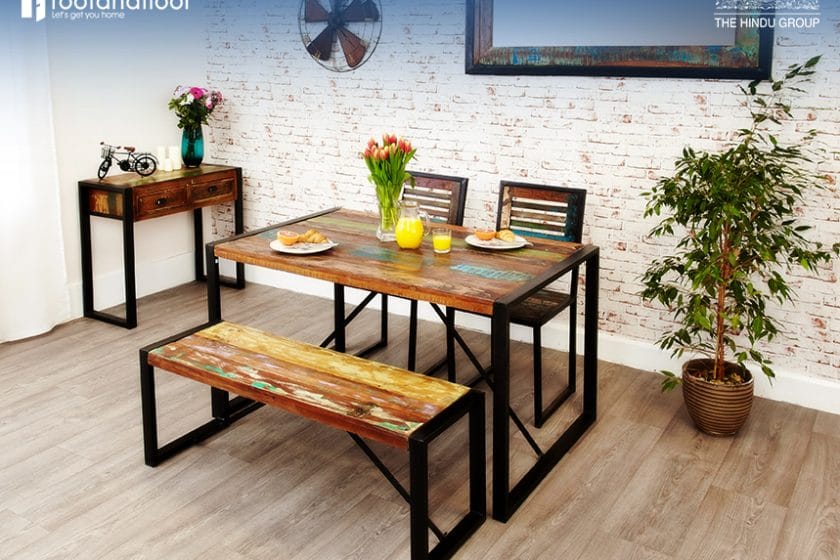John F Kennedy is supposed to have said that one person can make a difference, and everyone should try. He wasn’t quite referring to the environment when he said that, but it could very well be so.
The environment we live in today is no longer as pure and good as it once used to be. With increasing mechanisation, many forests have been wiped out, and with growing industrialisation, air pollution has also been on the rise.
Cities are becoming unlivable, and Kyoto Protocols can only do so much.
Sustainability has become fashionable. Eco-friendly houses are slowly coming into their own. It may not be possible for you to redo your entire home, but you can take small steps towards reorganising your furniture. With green furniture. What does that even mean?
What is green furniture?
Green furniture is eco-friendly furniture that is typically crafted from eco-friendly materials — be they recycled or specially-developed materials.
The process of making green furniture is also eco-friendly because it does not release any harmful chemicals into the environment. This means that even the byproducts that are produced are environmentally sustainable. Green furniture should also be easily recycled.
So, here are some tips to going green using green furniture.
Use bamboo
Bamboo is a plant that belongs to a family of grasses. And it can grow as fast as 3 feet in height in 24 hours. Not only that, but it also contributes 30% more oxygen and takes in more carbon dioxide than most other plants.
Despite being a grass, bamboo can be used in multiple ways. In many homes, bamboo is flattened for flooring purposes.
Bamboo is easily mouldable and thus is a popular choice when it comes to crafting furniture items. What are the advantages of bamboo?
- Bamboo does not swell or shrink with changing atmospheric conditions.
- It has a very high tensile strength (even greater than steel). This means that furniture made from bamboo is much stronger than most furniture you may already have in your home.
Despite the advantages, bamboo does have its downside. Bamboo does consume a lot of water and nutrients from the soil. Plus, the glue that is used to hold bamboo furniture together may contain formaldehyde (based on the supplier), which is a harsh chemical.
Check for recyclable materials
Another tenet of green living and the usage of green furniture is that it should be easily recyclable. This means that the materials used to make up the furniture should be easily dismantled when it’s time to dispose of.
By choosing recyclable and eco-friendly materials, the furniture can be remade and repurposed. And this way, they need not be dumped into landfills. Check if you can obtain furniture made from recycled metal or plastic.
Buy furniture – locally
When you source furniture from other places or other parts of the country, there is a significant environmental cost when you exercise the privilege of shipping.
The furniture that is shipped has to travel long distances before it arrives at your residence and adds to air emissions and pollution.
Remember, the further away from your home the item is shipped from, the larger the carbon footprint you have on the planet.
So, whenever possible, buy furniture locally. This way you are not only promoting the idea of a green environment, but you are also supporting the local economy and artisans.
Consciously avoid toxic chemicals
A lot of the furniture you see or buy is severely damaging to the environment. This is because most types of furniture are treated with synthetic substances, which release toxic compounds into the air, causing air pollution.
Volatile organic compounds (VOCs) like flame retardants and formaldehyde are the most common examples of hazardous chemicals that are released when furniture is treated.
Understanding and choosing the right furniture for your home is a project of its own and something that will take time and effort. And you may also need to do some background research before you buy.
But remember, every bit of effort you put into identifying and choosing eco-friendly materials will contribute towards a greener environment for time to come. By itself, that’s a great feeling to have.
So go ahead, next time when you need to buy furniture, keep these points in mind and make a wise decision. Your future generations will thank you for doing so.
This article was originally published on www.thehindu.com dated July 23,2017


